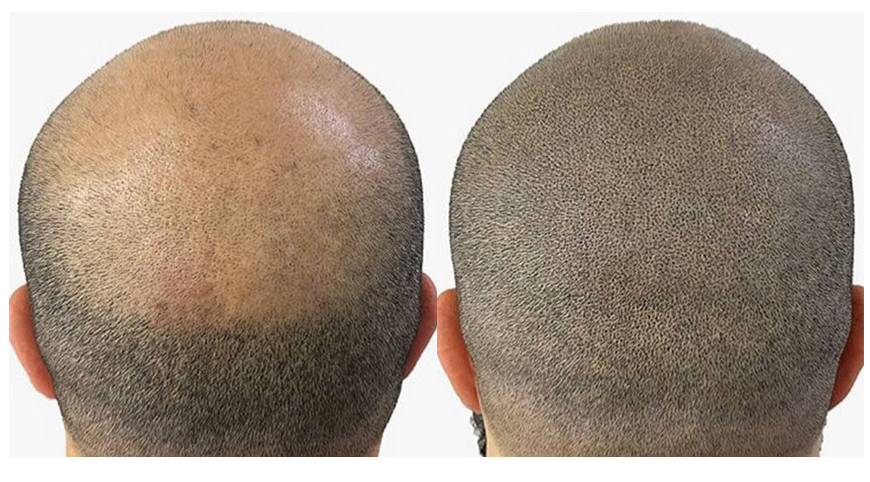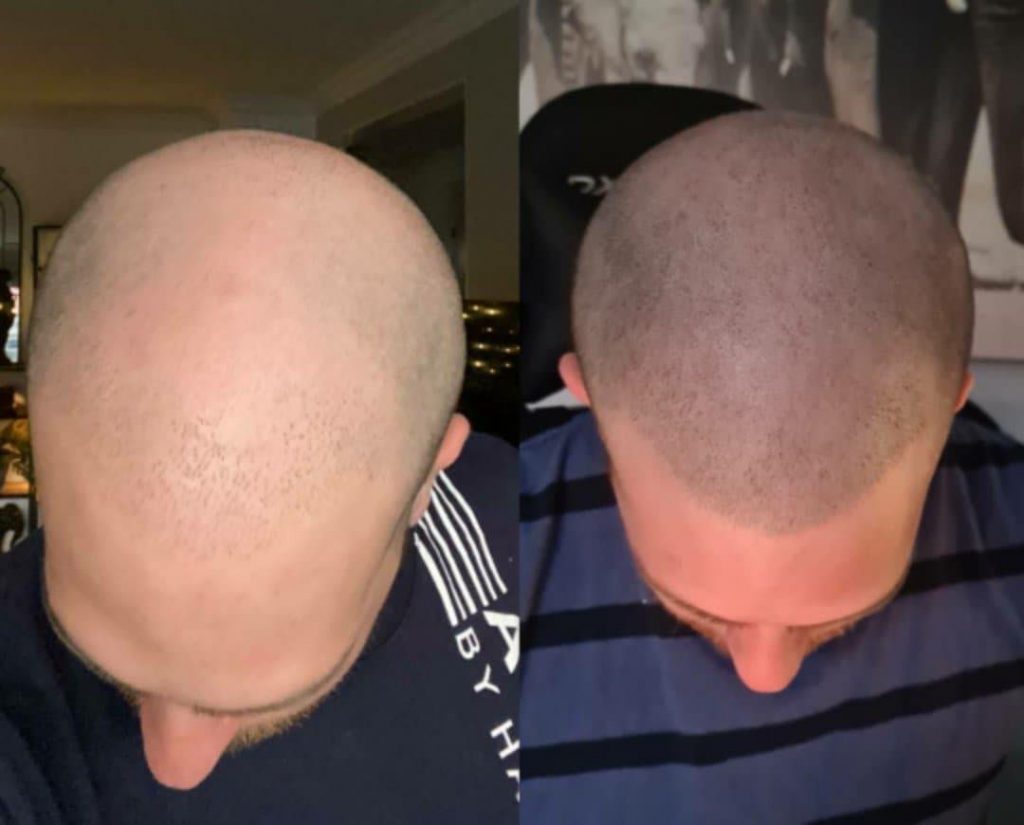Scalp micropigmentation, also called tricopigmentation, is a form of permanent makeup used to address hair loss and thinning hair in people of all genders. The popularity of scalp micropigmentation treatments has skyrocketed in recent years as many clients are opting for this non-surgical procedure over more cumbersome, riskier, and more expensive treatments.
In this blog, we’ll tell you what SMP is, why it’s such a popular hair loss treatment, and how you can get trained in the procedure to start offering these life-changing services. So let’s go!

What does scalp micropigmentation involve?
The scalp micropigmentation procedure involves an artist using a permanent makeup machine and needle cartridges to deposit small dots of pigment into the skin of the scalp to precisely replicate the appearance of shaved natural hair follicles.
Each scalp micropigmentation treatment takes several hours and most clients will need to undergo multiple treatments to achieve the desired results. The number of treatments needed depends on the extent of hair loss or thinning, skin type, and desired results.
Clients receiving scalp micropigmentation NJ will need to wait a number of weeks between each treatment, and it is extremely important that they follow the artist’s aftercare advice to avoid infection and ensure healthy healing with maximum retention. Here you will find an entire blog post devoted to post-treatment care and wound healing. Failure to follow aftercare instructions can lead to an increased risk of infection, poor retention, and other issues that can compromise healing results.
Who can receive scalp micropigmentation?
Although scalp micropigmentation clients are primarily male, the treatment can be extremely beneficial for clients of all genders. It is effective in treating hair loss in both male and female pattern baldness. It can also be used for clients with alopecia or those with scalp scarring from injury, previous hair transplantation, or other surgeries.
It can also be used to treat clients who have undergone chemotherapy or radiation therapy resulting in hair loss. However, one should always get a doctor’s clearance before proceeding with the procedure in this case. Clients may not be eligible for treatment due to compromised immune systems and other risks associated with chemotherapy and radiation therapy.
The treatment is also suitable for people with trichotillomania, a compulsive disorder in which sufferers tear out their hair, eyebrows, or eyelashes. It is also effective for people who have naturally thin or thinning hair who are unhappy with their appearance and want to create the illusion of thicker, fuller hair.

Why is scalp micropigmentation so popular?
Scalp micropigmentation is a very popular treatment for hair loss for many reasons. One of them is that it is a much more cost-effective treatment than surgical options, which can cost up to tens of thousands of dollars. Prices vary depending on the technician, but overall the lower prices of scalp micropigmentation compared to other hair loss treatment options make access to treatment much more affordable for clients.
Many clients choose this solution due to the non-invasive and non-surgical nature of the procedure. Pain and discomfort during a scalp micropigmentation treatment are minimal, depending on the person’s pain threshold, and there is virtually no recovery time after the treatment. This feature is very attractive to clients compared to a risky hair transplantation surgery which can have a long and painful recovery period.
Compared to surgical solutions, the results of scalp micropigmentation are much more instant and guaranteed. Several sessions may be needed to add density, but the client will be able to see a difference immediately. Unfortunately, some hair transplant surgeries may fail and the client will not get the expected results. Many experienced scalp micropigmentation artists will at some point in their career treat clients whose hair transplant failed or whose transplant left visible scars.
In addition to all the benefits mentioned above, scalp micropigmentation is very low maintenance once cured. It is sweat and water resistant, and the client does not need to think about their tricopigmentation once the area has healed, other than regular touch-ups every 12-18 months and the use of an SPF cream. This is a real breath of fresh air for customers who previously used wigs or hair prosthesis “systems” to treat their hair loss, which requires constant maintenance.
Is scalp micropigmentation painful?
As with all permanent makeup treatments, the pain experienced during the scalp micropigmentation procedure depends on each individual’s pain threshold. Most customers report that the treatment is slightly uncomfortable but virtually painless.
Certain factors can make the treatment more uncomfortable, such as alcohol consumption in the days before the treatment or exposure of the area to harmful UV rays, which clients should take into account. Alcohol consumption and sun exposure can also increase the risk of bleeding, infection, and scarring. Alcohol should therefore be avoided prior to treatment to ensure a safe and comfortable procedure.
Female clients may experience increased discomfort if undergoing scalp micropigmentation surgery around the time of their period, which is another factor to consider when determining whether or not the treatment will be painful.




